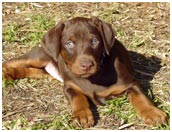
“only in the spirit of love, sacrifice and great cost will we bring our breed to a state of genetic excellence”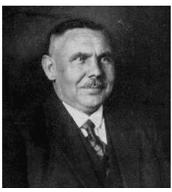 Philipp Grünig
Philipp Grünig
“Judge, scientific breeder and profound student of the Dobermann”


“only in the spirit of love, sacrifice and great cost will we bring our breed to a state of genetic excellence” Philipp Grünig
Philipp Grünig
“Judge, scientific breeder and profound student of the Dobermann”
 |
|
| Ottmar Vogel |
The Körung, established in 1969 by German Judge and breeder Ottmar Vogel, is an extensive test and evaluation of health, character and anatomical structure to identify the very best working Dobermanns for maintaining and improving the breed. The German Körung, which is voluntary, places a strong emphasis on the genetic makeup and health of the dog and is designed to be taken twice. The first rating, "Erstkörung”, the dog must be over two years of age, complete all prerequisites and, if passed, is valid and recommended for breeding for a period of two years. The rating given at the second test "Körung ZVA", if passed, is valid and recommended for breeding status for life and called the "Angekört".
Before a Dobermann can enter the Körung they must meet the following prerequisites:
In order to obtain uniformity of assessment, the same "Körung Kommission" (which consists of the Club’s President, the Chief Breed Warden, and the Chief responsible for the working qualities of the Doberman) always conduct and judge the Körung tests. The Körung typically encompasses a conformation evaluation, followed by a comprehensive and thorough temperament evaluation and finally a working test. The high number of failures, could almost without exception, be ascribed to nervous instability and the inability of the Dobermann to withstand pressure.
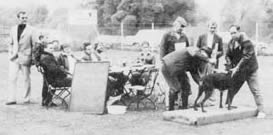 |
|
| Körung in 1970 at Marburg, Mesen |
In the conformation part of the Körung, the dog will be compared to the “ideal” standard and given a rating of either "I" (Excellent) or "II" (Very Good). The physical aspects are strictly graded, including detailed measurements for the entire dog. The measuring phase is also a very important part of the character evaluation, and a dog that will not allow measurement or shows aggression or avoidance will be dismissed at this point.
When the dog is presented for the tattoo control, the character evaluation begins. The psychological and physical stress for the dog is severe and he must depend on innate instincts in addition to formal training. Next, two dogs are paired in the down position for the evaluation of steadiness to gun shots. The dog must not show any unsteadiness. The dog and handler must walk though a crowd of people moving at various paces, opening an umbrella, and shaking a bag of bottles. During this part of the test the dog should not appear to be under any stress and should behave with self-confidence. The dog and handler now go directly from the ‘social’ evaluation to the protective instinct phase and there is no chance to ‘warm up’ the dog for bite work.
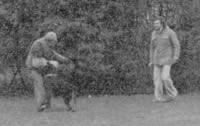 |
|
| Frontal attack on the dog and handler from behind a barricade |
During the protective instinct part of the test, a ‘decoy’ hides himself behind a barricade. As the dog and handler walk close by, the decoy suddenly jumps out as if to attack the handler. The dog must immediately react and defend the handler from this attack by gripping full and hard on the protective sleeve worn by the helper. The dog must show courage, hardness, and fighting spirit by calmly biting the sleeve deeply and hard, and he must hold the decoy firmly without hesitation. The decoy will threaten the dog with a stick and strike the dog twice on the less sensitive parts of the body. The dog must “out” on command and guard the decoy. At all times the dog must be under the handler’s voice control. If this is the dog’s first attempt at the Körung and he come off the sleeve but re-engages the helper, the test will be stopped and the dog will be held back for six months and may repeat the test one more time. If this is the dog’s life Körung, he will fail. After the dog has sufficiently guarded the decoy, the judges will order the handler to pick up the dog and prepare for a 50 yard courage test, again testing the dog’s courage and fighting spirit. The decoy comes running at the dog/handler team, screaming, shouting, and threatening with a stick. The judge orders the handler to send the dog. The dog must show power and courage as he runs down the field to make the grip. He will be threatened with a stick and the decoy will shout and try to overpower the dog. The dog must hold firmly. It is the job of the decoy to make this grip as difficult as possible. Again, the dog must hold without any hesitation and prove he can control the situation, then out on command and demonstrate his guarding instinct on the decoy in a strong and powerful manner until he is told otherwise by his handler. If the dog makes both grips and has evaluated high under social behaviour and stability, he will receive an “A” rating. If the dog comes off the sleeve in the courage test but immediately re-grips and has evaluated highly under social behaviour and stability, he will receive a “B” rating. The Körung can only be passed by dogs with a stable temperament and overall sound structure.
The purpose for German ZTP is to identify those Dobermanns which are, according to the breeding standard, suitable for breeding and eliminating unsuitable dogs from the breed selection. The minimum age to participate in the ZTP is fourteen months. The ZTP puts a dog in various provoking situations in which he must act in a desirable fashion. If he acts in an aggressive, shy, or fearful manner, he will fail the test and be excluded from the breeding program. To participate in the ZTP one must submit a letter of request and three-generation pedigree including tattoo/microchip number to the D.V. (Dobermann-Verein e.V.). On the day of the test, you must provide proof that the dog has obtained a BH (Begleithundprüfung: translates to "traffic-sure companion dog test"); that one parent has previously passed the D.V. ZTP test; sire and dam’s HD results; dogs HD results; a current eye examination; and a current echocardiogram. The ZTP rating is applicable during the dog’s breeding age, unless revoked by a D.V. committee, because of newly discovered or earlier concealed genetic faults. The test itself consists of two sections, conformation and character.
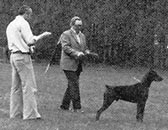 |
|
| Stand examination in the ZTP |
In conformation, the dog is compared to the “ideal” Dobermann in the German breed standard. The judge will give on of five conformation grades: "Vorzüglich" (V=Excellent); "Sehr Gut" (SG=Very Good); "Gut" (G=Good); "Befriedigend" (Sufficient) or "Ungn Ungenugend" (Not Sufficient). Dogs with a "G" conformation rating are not eligible to participate in the Körung. To pass the ZTP, females must achieve a minimum rating of "G" and males must achieve a minimum rating of "SG". All dogs must have a correct bite and 42 correctly placed teeth. Each dog will be placed on a platform and measured using a wicket. If a dog is up to two centimetres from the breed standard, they will be set back one level in the conformation rating (V rated dogs will then become SG). Dogs who are any more than two centimetres over or under the standard will be excused from the test and deemed unsuitable for breeding.
The second part of the ZTP involves the temperament testing of the dog. This ascertains the dog’s level of self-confidence, recovery from stress, protection instinct, fighting spirit, courage, hardness, sharpness, desire to work, irritation level, and gun-shyness. Testing all these parts give a full picture of the character and temperament of the tested dog. The Temperament rating is expressed using the combination of "1A" or "1B". "1A" means the overall temperament is excellent while "1B" means that the temperament is of an acceptable level to pass and the dog has the right to be bred. A dog may receive a three-month hold back (Mon-zurückgestellt), in which there is sufficient doubt about the dog’s behaviour as it relates to soundness of temperament and breeding suitability. A dog with this rating may not be presented to any other judge for re-testing before a period of three months has expired. Should the dog not pass the second test then a further re-test is not possible and it will be classified as "'Not Fit for Breeding" for life.
The temperament test is comprised of surprises and situations for the dog to cope with. The type of reaction and recovery are taken into account. The social aspect is covered by the dog having to be among groups of unknown people who apply various psychological pressures to the dog. The dog should not look anxious, worried, or unsure, and should not act in a dangerous manner. Any display of nervousness, insecurity, misbehaviour, or incorrect responses to the stimuli applied, are all noted on the test form.
One of the most difficult part of the ZTP for the dog is when the owner ties the dog to a stake in the middle of the field and then leaves the field and the dog’s sight. Obedience commands like ‘sit’ or ‘down’ are not allowed to be given. Approximately 5 minutes later, the judge will go out to the dog, walk around him, stand in front of him, drop a magazine, and observe the reaction of the dog while the owner is still out of site. This part of the test measures the dog’s self-confidence and temperament. The dog should remain stable and hold his ground. The dog should not move backwards or be aggressive or fearful. When the judge has completed this portion of the test, he will signal to the handler to come and pick up his dog for the guard-and-protection part of the test. The psychological stress is unique in that it reveals all manners of strengths and weaknesses. Naturally, many owners prepare their dogs as much as possible to cope with these tests however there are certain subtests that no amount of conditioning can overcome and therefore the end results are quite revealing.
The ADPr is not a training degree but a test that is used for show and breed requirements. It provides documentation that the dog is physically able to endure a certain amount of physical stress without showing significant fatigue. This challenges the heart and lungs as well as the rest of the body. Other characteristics such as spirit and hardness must be present. Successful demonstration of the test will provide proof that the desired characteristics are present in a healthy body.
The dog will run a total of 20 kilometers while on leash at the right side of the handler and move in a normal trot next to a bicycle. There will be three rest periods at which time the judge will inspect each dog. Signs of fatigue or sore feet will excuse the dog from completing the test. Dogs that lack proper spirit and hardness, cannot keep up the required speed or need extra time will not pass the examination. Upon completion of the 20 kilometre run, the handler assembles with his dog and goes through the heeling exercise according to IPO rules, then completes the exam by jumping a one meter hurdle. In addition, the judge must verify the psychological condition of the dog.